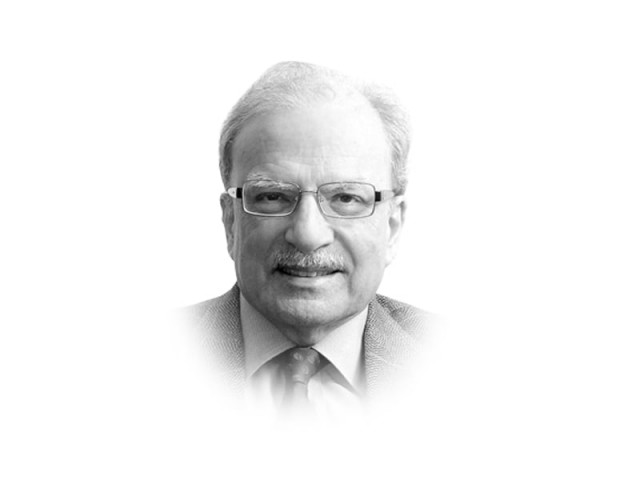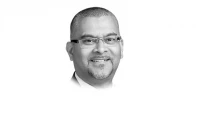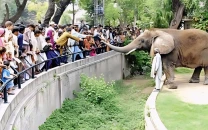Women and youth support Modi and the BJP
Serious effort has been and is being made in India to study the voters’ behaviour

I am staying with the subject of elections in India for one more week for the reason that would become clear from the subjects I will cover in this brief essay. When, on June 4, 2024, the Indian Election Commission announces the results of the poll, it is highly unlikely that the country’s political parties would question the outcome. That was not the case in Pakistan when on February 7 millions of voters went to the polling booths to elect the members of the national and provincial assemblies. There were a number of oddities in the case of the elections in Pakistan. The candidates who received the most votes were not allowed to contest under the umbrella of the political party to which they belonged. They were permitted to participate as ‘independents’ and not as members of Pakistan Tehreek-e-Insaf, the PTI. Imran Khan, the party’s founder and chairman, landed in the jail on what, to most observers, were frivolous charges. The Pakistani election was regarded as ‘rigged’ by several political groups.
The fact that the political parties in India will accept the results of the elections is not the only difference among the two neighbours. Serious effort has been and is being made in India to study the voters’ behaviour which will no doubt influence the programmes of the parties, large and small, which dot the country’s political landscape.
Analysts studying the Indian electorate as polling continues in the country are surprised by one element in their discovery. If they have concluded correctly, it could have significant impact on the way the Indian policymakers view the world, in particular the countries outside its immediate borders. “From the United States to South Korea, it is a political axiom in many parts of the world: Women and young people tend to be less conservative than their husbands and fathers. Not in India.” This was the main thesis of the long article contributed by Karishma Mehrotra and Gerry Shih to The Washington Post.
India launched the long polling process beginning on April 19 in which more than half a billion voters will trudge their way to tens of thousands of polling booths spread across this vast land. More votes are likely to be cast by women and young people for the Bharatiya Janata Party and its leader Narendra Modi than for any other contestant. These two groups of voters will keep Modi in the Prime Minister’s New Delhi residence for another five years. By 2029, he would have been India’s prime minister for 15 years, a spell almost paralleling that of Jawaharlal Nehru, the country’s first prime minister and it its founding father.
Continue Mehrotra and Shih: “The emergence of these two constituencies marks a curious divergence between India and other democracies. It’s born from Modi’s unique appeal, which blends Hindu nationalism, personal charisma, big ticket infrastructure spending and generous welfare programs into a powerful pitch that overshadows his failure to deliver enough jobs to precisely these voters.”
Psephologists — political scientists who study elections and analyse voter’s preferences — believe that like women in many other parts of the world those in India display higher levels of religiosity compared with men. This has benefited the Hindu nationalist BJP which is working hard to make India a Hindu nation. The party’s governing philosophy, Hindutva, makes no effort to hide its strong religious preferences. Modi has begun to call his country ‘Bharat’ rather than India.
Given women’s religious beliefs and unlike other countries in what is now called the ‘global South’ more women than men are going to the polling stations in India. In the last national elections that were held in 2019, the gap between men and women in voter turnout significantly narrowed for the first time in the country’s electoral history. According to Sanjay Kumar, co-director of the Lokniti programme for comparative democracy at the Center for the Study of Developing Societies, in several state elections the number of women who voted has exceeded men.
Such differences did not exist a generation ago in a patriarchal society in which men had greater control over where women went, how they lived, and also how they voted. Such a control is now the case in two countries — Iran and Afghanistan — that adopted Islam as the mode of governance. Today, that’s considered outdated even in the political and social systems of the global south. With the explosion of social media, researchers have found that men and women get political information often from different sources. “Fifteen years ago, information sources for a household used to be the same, whether the same TV channel or newspaper or interacting with the same set of people,” said Rahul Verma, a political fellow at the Center for Policy Research. Now, he said, “individual mobile servers in our hands” have led to “different decision-making”.
Modi’s government has launched a number of social and economic welfare programmes aimed at improving the situation of women but they have not paid electoral dividends to the extent that was expected. The same is the case in Pakistan. The government headed by Prime Minister Benazir Bhutto launched several programmes aimed at women’s welfare but it was another political group rather than the Pakistan Peoples’ Party that benefited politically. In both the elections held in 2019 and 2024, it was Imran Khan’s PTI that drew more female support than the PPP.
Let’s go back to the situation in India. While some health indicators for Indian women have improved, their labour participation rate fell steadily from 39 per cent as recently as 2000 to a low of 24.5 per cent in 2019, according to the International Labour Organization. But this has not harmed Modi’s or BJP’s standing among women. This is also the case with the youth. Modi is attracted to the 18.5 million young Indians who are registered to vote for the first time. For many of these young Indians, the sense that India under Modi is rising as a geopolitical and economic power makes him attractive.
That, of course, is not the case in Pakistan. Pakistan has one of the youngest populations in the world with the median age of only 24 years. This means that some 10 million people are under that age. Recent governments based in Islamabad have brought Pakistan to lowest position it has had in terms of its global standing for decades and the youth are noticing that. This is one reason why they voted the way they did in the 2024 elections.
Published in The Express Tribune, May 13th, 2024.
Like Opinion & Editorial on Facebook, follow @ETOpEd on Twitter to receive all updates on all our daily pieces.
















COMMENTS
Comments are moderated and generally will be posted if they are on-topic and not abusive.
For more information, please see our Comments FAQ